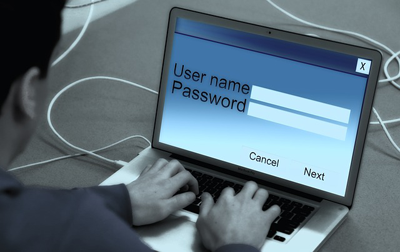Blog, Hackers & Scams Computer Scams and Hackers – What you can do

As a web developer, I am on my computer all day. I have seen an alarming escalation in scams, hack attempts and ransomware cyberattacks. Scams are schemes to con you out of your money. They can arrive by, phone call, text message, or email.
Computer hackers use computer viruses to gain access to your computer details, to steal your money and identity, then scam you.
Prevent Tech Fraud and Hacking
1. Use passwords that contain a combination of upper case, lower and unusual characters. It’s a common misconception that a person is trying to guess your passwords. There are robots scanning the internet with sophisticated algorithms that are attempting to unscramble your passwords. The harder it is, the least likely you will be compromised.
2. Most people cannot remember these passwords: You can install programs for free such as Roboform, lastpass or dashlane. You need only remember the one password and then all are stored. It also good practice to change your most important passwords (banking, shopping) annually.
3. Install anti virus software and set it up for automatic updates.
4. Update your software. Sometimes it’s annoying but they often contain security patches
5. Email is NOT secure. I can’t tell you how many times my customers have send credit card information via email.
Popular Scams
• If you get an email from your bank, or store asking for you to “re enter your password” do not! They will not call you to ask you for security to reveal your password. They sometimes send an alarmingly large “payment due” email with an invoice. Do not open the attachment! And never click on links in any email that may ask for personal information.
• Telltale signs of scam emails are misspellings, or if you hover your cursor over the links in the email, they do not go to legitimate urls.
• You may have typed in a wrong url by mistake and are taken to a scam site (such as twwitter.com) There are almost 9000 scam domain names according to a recent study published in AARP magazine. They look like the real sites, but are not. Then when you log in, they steal your log in info.
• Some scammers call and claim to be computer techs associated with well-known companies like Microsoft or Apple. Other scammers send pop-up messages that warn about computer problems. They say they’ve detected viruses or other malware on your computer. They claim to be “tech support” and will ask you to give them remote access to your computer. Eventually, they’ll diagnose a non-existent problem and ask you to pay for unnecessary – or even harmful – services.
If you get an unexpected pop-up, call, spam email or other urgent message about problems with your computer, stop. Don’t click on any links, don’t give control of your computer and don’t send any money. Many times a pop up will encourage you to download a free item such as a PC cleaner. Do not download, it can be malware installed which will cause you to have pop ups constantly appear and they suggest calling a “technician” to fix.
Malicious ads can be reported to the FTC online at ftc.gov/complaint.
Hacking
 A few years ago, Sony was in the news as sensitive emails were hacked and released. HBO was recently hacked by a group called Ourmine Hacking Group. Hackers gain access to sensitive documents, passwords and emails. They blackmail a company that if demands are not met, they release sensitive materials.
A few years ago, Sony was in the news as sensitive emails were hacked and released. HBO was recently hacked by a group called Ourmine Hacking Group. Hackers gain access to sensitive documents, passwords and emails. They blackmail a company that if demands are not met, they release sensitive materials.
Web sites, especially WordPress sites are vulnerable to hacking at the server lever. They are not after your small company per say, nor do they ask for money. They infiltrate and create outbound links and fake home page messages. (haha you’ve been hacked by…) They do it to for fun and they cause major harm to businesses. Unfortunately, sites are vulnerable to hacking. The best you can do is to check that your web host and or provider has updated plugins, secure passwords and regular backups. If your site is hacked, it’s a lot easier to replace the site with the backup then try to clean the code.
Preventing Cyberattacks and Ransomware
Ransomware is a computer virus that you can get from opening a malicious document or email. It can even be from people you know, because their email addresses may be stolen. When you open the malicious file in your pc, your computer will either freeze, or ask to run the app. Files will suddenly become encrypted and ransomware notes will be dropped into every folder. The document goes on to say that unless you have the encryption key, you cannot access your files and if you try to remove the virus on your own, the files will be permanently destroyed. You usually have a few weeks to comply with their instructions to pay for the software and the key. They demand each victim to pay using Bitcoins, with various ransom demands.
Some are forced to pay thousands of dollars but there is no guarantee you will get your files back
It is strongly recommended not to pay the ransom as the activations keys may not decrypt the data entirely.
Cerber -flooded the internet in March 2016. Wanna cry and Peyta infected Microsoft in May 2017; 230,000 computers in over 150 countries.
The warning here – always use Microsoft updates automatic setting.


